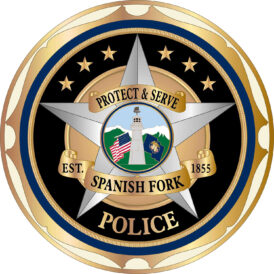Land managers strike balance in scattering: ashes in state parks
The Associated Press
SALT LAKE CITY — For many families and friends, scattering the ashes of a loved one’s cremated remains from a mountaintop, canyon rim or alpine lakeshore is a fitting remembrance, an expression of the restorative sanctuary of the wild.
For public land managers, the increasingly popular practice means administering permit applications, reviewing environmental impacts, protecting against the false alarm of a crime scene or just looking the other way.
“We do tell people you’ve got to be careful because it gets windy near the canyon rim,” said Mallory Smith, management assistant at Grand Canyon National Park, which issues free “cremains” scattering permits to visitors.
“I can’t tell you how many people have later told me they wound up covered with ashes,” Smith said.
In a story Sunday, The Salt Lake Tribune reported that Forest Service and Bureau of Land Management officials couldn’t point to specific regulations dealing with scattering of ashes, but the Code of Federal Regulations prohibits dispersing cremated human remains in national parks without a permit.
The permitting process varies between parks, depending on demand. Many parks would rather not promote the practice.
“You can imagine the fine line we walk since not every place is appropriate to scatter ashes of human remains,” said Joan Anselmo of Grand Teton National Park, Wyo., which gets 10 to 20 requests annually to scatter ashes on peaks, trails or lakes.
“We need to know the location where they are going to scatter because someone may come in and say, ‘Gosh, we found a bone fragment or tooth’ and we need to know if it’s the scene of a homicide or a scattering site.”
Grand Canyon permits require a copy of the cremation certificate, location and date of the requested scattering and the relationship of the applicant to the deceased.
Permit conditions prohibit scattering near campsites, water and public gathering areas and require scattering remains in a manner to “disperse their identity” with no teeth, bone fragments or recognizable remnants in the ashes.
Most crematoriums pulverize remains after they are removed from the oven, although the additional step is optional and not required by law.
Remains cannot be scattered at places considered sacred by American Indian tribes, such as archaeological sites.
With landforms named Angel’s Landing and the Great White Throne, Zion National Park periodically fields requests from visitors to scatter ashes.
“Even though we don’t want to be in a position of promoting this or making the opportunity widely known, we don’t think it is an inappropriate request and hopefully we handle it in a sensitive and compassionate way,” Zion Superintendent Marty Ott said.
The park recently was bequeathed $30,000 by a regular visitor.
“The popularity of cremation is increasing dramatically and if visitors scatter ashes privately and the resource does not suffer, it’s not a big issue,” Ott said.
In the Salt Lake Ranger District of the Wasatch-Cache National Forest, anyone who requests a permit to scatter ashes will be rejected.
Like requests for wedding permits, though, resource forester Larry Gillham tells those seeking ash-scattering permits that just because the Forest Service doesn’t issue permits doesn’t mean you can’t do something.
This story appeared in The Daily Herald on page A5.



